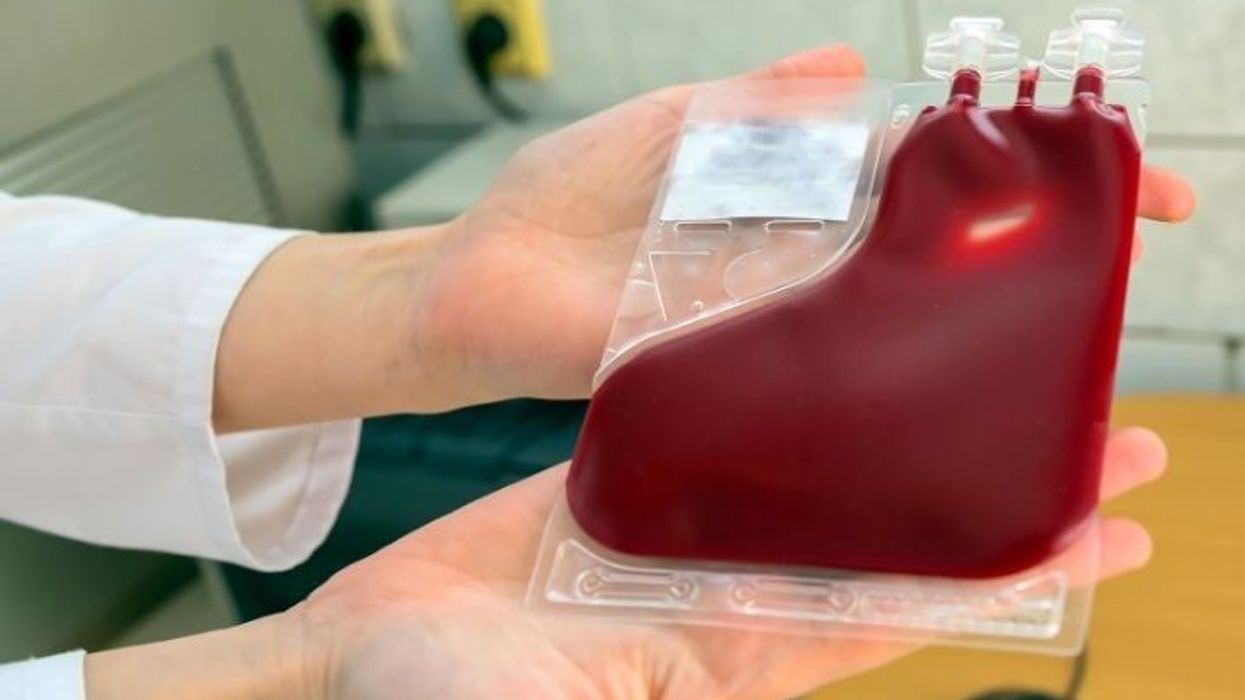In the ever-evolving world of medical science, breakthroughs and peculiar discoveries often captivate our attention, challenging our understanding of health and the human body. The year 2024 has been no exception, offering a plethora of strange and intriguing health stories that push the boundaries of conventional medicine. From the creation of "frog saunas" aimed at saving endangered amphibians to the use of chicken feathers in chemotherapy drug delivery, these stories highlight the innovative and sometimes bizarre solutions researchers are exploring to address complex health challenges.
1. Python-Inspired Medical Device: A new medical device inspired by python teeth has been created to enhance the strength of rotator cuff repairs, improving surgical outcomes for shoulder injuries.
In a remarkable intersection of nature and medical technology, researchers have developed a medical device inspired by the teeth of pythons to enhance the strength of rotator cuff repairs. This innovative device mimics the unique structure and mechanics of python teeth, which are known for their durability and ability to anchor firmly into their prey. By incorporating these principles, the new device promises to improve the stability and healing process of rotator cuff surgeries, which are often prone to complications and re-injury. This breakthrough not only exemplifies the potential of biomimicry in medical advancements but also offers hope for better surgical outcomes for patients with shoulder injuries (ScienceDaily).
2. AI-Enhanced Medical Decisions: Artificial intelligence is being used to assist doctors in making better medical decisions, potentially saving lives through more accurate diagnoses and treatment plans.
Artificial intelligence (AI) is revolutionizing the medical field by enhancing doctors' decision-making capabilities. AI algorithms can analyze vast amounts of medical data at unprecedented speeds, providing more accurate diagnoses and personalized treatment plans. For instance, AI systems are being used to interpret medical images, identify patterns that might be missed by the human eye, and predict patient outcomes based on historical data. This technology not only improves the accuracy and efficiency of medical care but also has the potential to save lives by enabling earlier detection of diseases and more precise interventions. As AI continues to advance, its integration into healthcare promises to bring significant improvements in patient care and outcomes (ScienceDaily).
3. Microrobot-Packed Pill: Researchers have developed a pill containing microrobots to treat inflammatory bowel disease in mice, which could lead to new treatments for gastrointestinal disorders.
Researchers have developed a groundbreaking pill packed with microrobots designed to treat inflammatory bowel disease (IBD) in mice. These tiny robots navigate the gastrointestinal tract, delivering drugs precisely where they are needed, enhancing the effectiveness of the treatment while minimizing side effects. This innovative approach holds promise for revolutionizing the treatment of various gastrointestinal disorders, offering a targeted and efficient method to manage conditions like IBD. The microrobot-packed pill exemplifies the potential of nanotechnology in medicine, paving the way for new treatments that could significantly improve patient outcomes (ScienceDaily).
4. Self-Healing Bioelectronics: Scientists invented "living bioelectronics" that can sense and heal skin, potentially revolutionizing wound care and treatment for skin injuries.
Scientists have developed self-healing bioelectronics, a cutting-edge technology that could revolutionize medical care. These "living" bioelectronics are capable of sensing and repairing skin, mimicking natural biological processes. The devices consist of flexible, biocompatible materials integrated with electronic circuits that can detect and respond to changes in their environment. When damaged, these bioelectronics can autonomously repair themselves, maintaining functionality without the need for external intervention. This innovation holds significant promise for applications in wound care, chronic disease management, and wearable health monitors, potentially transforming how we approach patient care and medical treatments (ScienceDaily).
5. Chicken Feathers in Chemotherapy: Chicken feathers are being used as a delivery system for chemotherapy drugs and repair enzymes, representing an innovative approach to cancer treatment.
Recent research into the role of chicken feathers in chemotherapy has revealed some intriguing possibilities. Chicken feathers, which are largely composed of keratin, a fibrous structural protein, are being studied for their potential to improve the effectiveness of chemotherapy treatments. Scientists are exploring how keratin extracted from feathers might be used to create novel drug delivery systems or enhance the stability and absorption of chemotherapy drugs. This innovative approach aims to make treatments more targeted and less toxic to healthy cells, potentially reducing the side effects often associated with chemotherapy. Although still in the experimental stages, the use of chicken feathers in this context represents a promising fusion of biotechnology and waste recycling, highlighting an exciting new frontier in cancer treatment.Artificial Spider Silk Sensors: Imperceptible sensors made from "electronic spider silk" can be printed directly onto human skin, offering new possibilities for wearable technology and health monitoring (ScienceDaily).
6. Bat Nightclubs: Bat "nightclubs," areas where bats congregate, may hold the key to solving future pandemics due to the unique ways bats handle viruses.
Bat "nightclubs," or areas where large colonies of bats congregate, could be pivotal in the fight against future pandemics due to the unique ways these creatures handle viruses. Bats are known for their remarkable immune systems and ability to harbor a wide range of viruses without succumbing to illness themselves. Researchers are increasingly studying these roosting sites to understand how bats manage viral infections without falling ill. By examining the interactions and immune responses within these dense bat colonies, scientists hope to uncover new insights into viral resistance and immune regulation. This knowledge could pave the way for novel treatments and preventative measures for human diseases, potentially helping us better prepare for and manage future pandemics (ScienceDaily).
7. Facial Temperature Diagnosis: Doctors could soon use facial temperature readings for the early diagnosis of metabolic diseases, a technique that could improve early detection and treatment.
Facial temperature diagnosis is an emerging technology that leverages advanced thermal imaging to monitor and assess health conditions through variations in facial temperature. By using infrared cameras to detect heat patterns on the skin, this method can identify subtle temperature changes that may indicate fever, inflammation, or other medical issues. The non-invasive nature of facial temperature diagnosis makes it particularly useful in settings like airports, schools, and healthcare facilities, where it can provide quick screenings for potential symptoms of illness. As technology advances, facial temperature diagnosis could become an integral part of routine health monitoring, offering a convenient and efficient way to detect early signs of disease and enhance public health responses.















 Dr. Cary S. Kaufman teaches the "Essentials of Oncoplastic Surgery" course through the National Consortium of Breast Centers, providing breast surgeons around the world with advanced techniques for optimal breast surgery outcomes.
Dr. Cary S. Kaufman teaches the "Essentials of Oncoplastic Surgery" course through the National Consortium of Breast Centers, providing breast surgeons around the world with advanced techniques for optimal breast surgery outcomes.